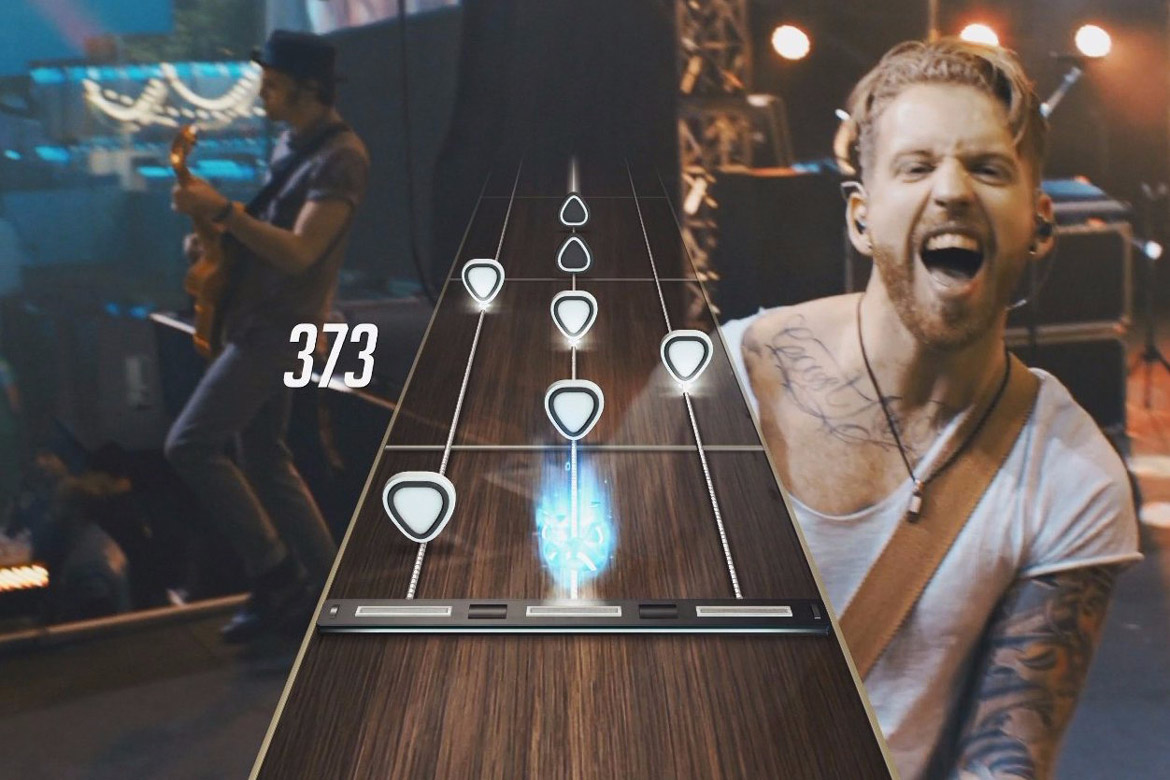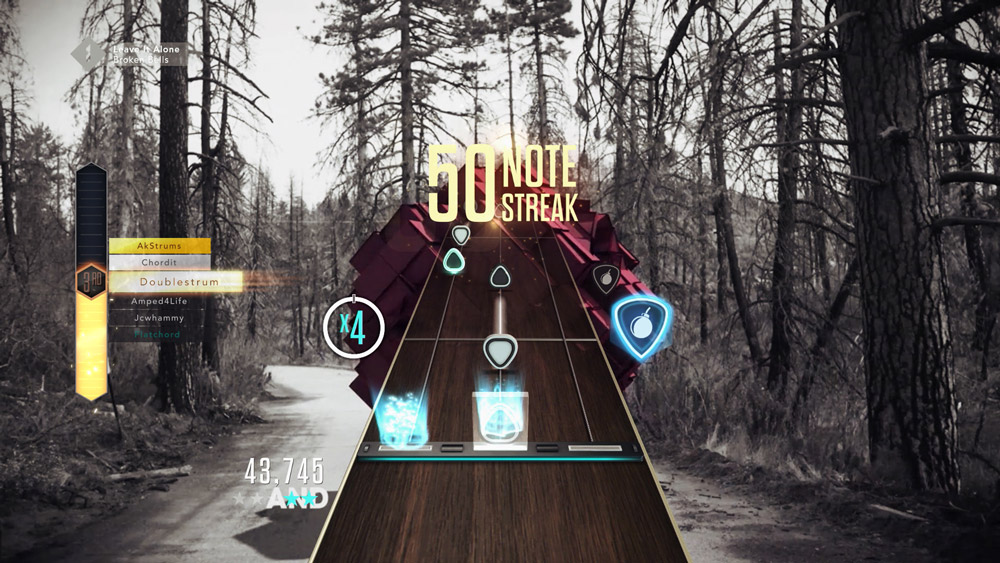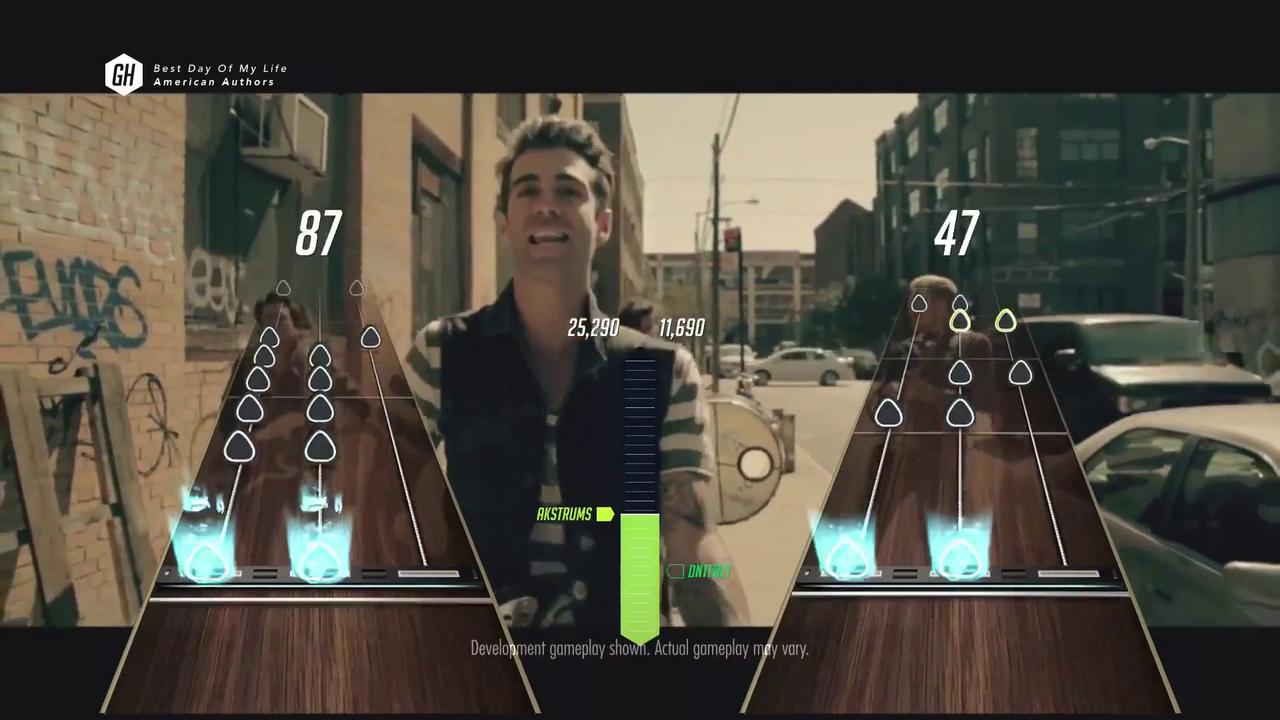TL;DR
Guitar Hero Live shakes things up with a revamped guitar controller that feels more realistic, featuring a new six-button layout that ups the challenge and emulates real guitar playing. The game ditches cartoon graphics for immersive first-person live-action video, putting you on stage. While the FMV can get a bit repetitive, the audience and band reactions are impressive. GHTV offers a massive, ever-growing song library, but progression and unlocks often involve microtransactions. Despite minor calibration quirks and a learning curve for the new controls, the core gameplay is compelling and incredibly fun, especially with friends. Ready to shred? Read the full review to see if it's worth plugging in!
Prepare to engage your musical dexterity and revisit your inner rock star! Guitar Hero Live represents a significant update for the current generation of consoles, featuring a comprehensive redesign. The key questions are: how substantial are the changes, and more importantly, does the core gameplay remain compelling?
The initial impression upon unboxing Guitar Hero Live is the redesigned guitar controller. While still constructed from plastic, the design exhibits a more refined and mature aesthetic. Our guitar-playing editorial team members appreciate the neck’s closer resemblance to a real guitar, departing from the purely toy-like feel of previous iterations with their large, brightly colored buttons. The new design conveys a more premium and realistic feel, a significant step up from the toy-like instruments of the past, which, while initially entertaining, often ended up as space-consuming relics. The updated design also promotes a more skill-based experience, mitigating issues with unresponsive buttons. While a firm press is still required, the improved responsiveness enhances the gameplay experience. Controller quality is critical, directly impacting the player’s control, making the technical aspects of the guitar paramount. Beyond the elimination of the oversized, brightly colored buttons, the button layout has been revised. Previous Guitar Hero guitars featured five buttons; this version utilizes three buttons across two rows, totaling six. This configuration more closely emulates real guitar playing (with the caveat that it’s still a simplified approximation), mirroring the use of six strings for chords and melodies. However, this also introduces a greater degree of difficulty, requiring players accustomed to the previous system to adapt – potentially reigniting the desire to pursue virtual rock stardom.
The game’s presentation has also undergone a complete overhaul. The charming, hand-drawn graphics and cartoon characters, such as Lars Ümlaut, have been replaced with high-resolution, first-person video, offering a guitarist’s perspective. Players perform on stage before a live audience, with band members providing visual accompaniment. The audience reacts dynamically and realistically, singing along, clapping, and displaying positive feedback for successful performances. At its best, the immersive experience of hitting the correct notes, and engaging with the flow of the music, provides a genuine sensation of performing live on stage. However, over time, a degree of FMV artificiality becomes apparent, as the pre-recorded nature of the visuals becomes more noticeable, resulting in a somewhat repetitive experience despite the initially impressive setting. Nonetheless, the seamlessness of the game’s reactions remains impressive, and witnessing the band’s subtle expressions of disappointment, and the audience’s reactions to poor performance, can be genuinely amusing.
Guitar Hero Live offers two primary modes: Live, as described above, and GHTV, which provides access to an extensive and diverse playlist and themed “channels,” designed to appeal to a broad audience. Live mode immerses players in performances before audiences in progressively larger and more impressive venues. GHTV serves as a central hub where players can choose individual songs (accompanied by music videos) or participate in themed channels, such as “Rock Legends” at specific times. The current library contains approximately 150 songs, spanning from classic tracks like Alter Bridge’s “Cry of Achilles,” In Flames’ “Deliver Us,” and Judas Priest’s “Breaking the Law,” to more mainstream selections such as Boston’s “More than a Feeling” and Bruno Mars’ “The Lazy Song.” Live mode features pre-selected sets of 3-5 songs, while GHTV offers greater freedom but incorporates performance-based progression and microtransactions. Songs can be unlocked using bonus tokens earned through gameplay, or purchased with real currency. The use of microtransactions is a contentious point, and the perceived value proposition of a package with a significant initial cost (game + guitar, with additional guitars priced at 600 SEK) is open to debate. However, the extensive selection of included songs, and the enhanced experience provided by the new hardware, contribute to a package that, overall, does not feel unreasonably priced. GHTV’s advantage lies in its constantly expanding library of diverse songs available at a relatively low cost per play. The disadvantage is the pay-per-play model, requiring either earned in-game currency or real money. Unlike games such as
SingStar, where songs can be purchased and owned, Guitar Hero Live utilizes an on-demand system. The long-term viability of this approach remains to be seen. Guitar Hero Live deserves recognition for its innovative approach, and we have not yet encountered the need to spend real money, as the earned bonus currency has sufficiently covered our play time thus far (with remaining free plays).
The menu navigation can be somewhat cumbersome initially, requiring familiarization via the guitar controller. Actions such as initiating two-player mode are not immediately intuitive, requiring some experimentation. However, the system is not overly complex, and users will quickly adapt. Playing two-player Guitar Hero Live is highly enjoyable, fostering collaborative rocking out and direct competition for the highest score. Players of varying skill levels can also balance the challenge by selecting different difficulty settings for the same song.
FreeStyle Games, the developer behind Activision’s title, has successfully fine-tuned the button mechanics and difficulty progression. New players may initially find even the simplest notes challenging, but proficiency quickly develops, leading to a desire for increased challenge. The difficulty can then be adjusted to levels that would impress even Jimi Hendrix. We did encounter a synchronization issue between audio and video on our Panasonic reference plasma display. Even slight lag in the video can significantly impact performance on faster songs. The initial setup includes a calibration tool to determine audio-visual synchronization. While reasonably accurate, the moderately paced animation may not perfectly reflect the timing requirements of fast-paced songs. We found it necessary to advance the graphics by two steps to achieve perfect synchronization with the audio (achieved via the clock-based calibration sequence). This issue is not inherent to the game, but rather a consequence of the slower response times of modern displays compared to older CRT technology. Although the delays are measured in milliseconds, they can significantly impact gameplay.
Guitar Hero Live, through its compelling presentation, diverse song selection, and well-paced difficulty curve, provides an engaging and enjoyable experience. The editorial team found the game highly entertaining, particularly in two-player mode. A third player can also connect a microphone for singing, but the core focus remains on guitar gameplay. The experience of performing before a responsive audience, eliciting either adulation or disappointment, successfully captures the essence of being a guitar hero. And ultimately, isn’t that the objective of Guitar Hero Live?




